
At some point or another…every person on Earth fantasizes about owning their very own drum set.
Yet very few actually do, mostly because in reality, they’re big, loud, expensive, and annoying to your neighbors.
But even among those of us ready and willing to do whatever it takes to call ourselves drummers…
There’s still the initial problem of choosing your first kit… and the on-going struggle of refining that kit, year after year.
So in this ultimate buyer’s guide, you’re about to get a crash-course on everything a drummer (both beginner and advanced) must know when buying, upgrading, or accessorizing their drum set.
First up…
What to Look for in a Beginner’s Drum Set
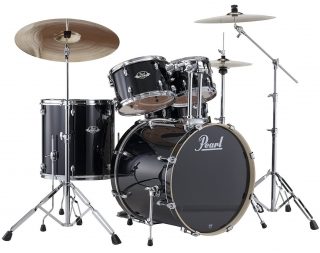
When shopping for their first drum set, it’s common for beginners to focus on minor details that don’t matter…at least not for them…yet.
So instead, here are the 4 MAJOR DETAILS you MUST consider to avoid making a dumb purchase:
- Shell Packs vs Complete Drum Sets
- Number of Pieces
- Double vs Single Bass Drum
- Shell Sizes
So up next, let’s take a closer look at each of these…
Why You Should Avoid Shell Packs as a Beginner
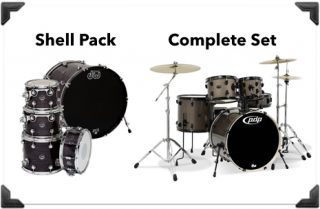
When browsing through pictures of drum sets online, you almost always see full setups that include:
- drums
- cymbals
- hardware
And what many don’t realize is: some of these packages include just drums, with no cymbals or hardware. These are known as shell packs.
Compared to complete drum set packages, shell packs are typically higher quality…and ideal for advanced drummers who are in the process of upgrading their kit, piece by piece.
Beginners on the other hand, are far better off buying a complete drum set package, with drums, cymbals, and hardware included, since they’re much cheaper and require much less decision-making.
So that’s your first tip. Up next…
How Many Pieces Should You Start With? 4, 5, or more?
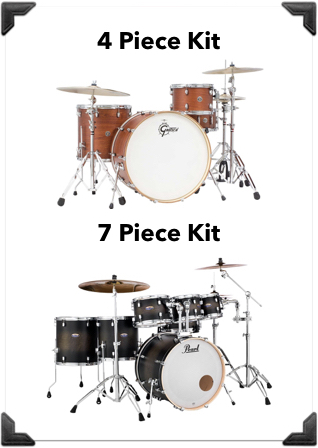
Depending on what styles of music you like…and who your drum heroes are…
The drum set of your dreams could be anywhere from a simple 4-piece setup that many jazz legends prefer…to the monstrous 30+ piece kits of rock gods like Neil Peart.
But regardless of which you think you want, it’s always better to start with a simple 4 or 5-piece kit, and expand later on if necessary.
Because if you can’t even play a simple beat yet…you won’t have much use for a giant rack of toms.
Moving on…
Should You Start With a Single or Double Bass Drum?
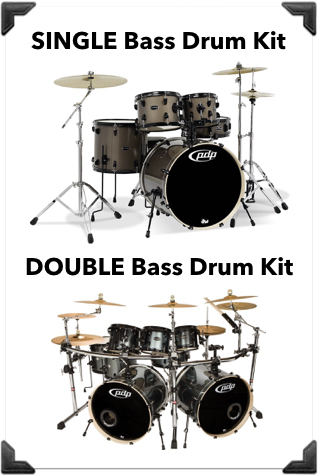
While it may not make sense to buy a giant rack of toms for your first drum kit…
It MIGHT possibly make sense to add a second bass drum…IF and only IF, you consider yourself the metal head type, and ALL your favorite drummers play double bass setups.
But even then…they’re generally not ideal for beginners. Learning to use just one foot is difficult enough, so using two right away is mostly unrealistic.
If you really want to learn double bass rhythms, a better solution might be to use a double bass drum pedal instead, which allows you to use both feet on just a single kick drum.
We’ll go into more detail on this topic later on the post.
Larger Shell Sizes vs Smaller: What’s the Difference?

While advanced players might scrutinize over the dimensions of every drum on their kit…
Newbies only need concern themselves with the following two package standard kit sizes:
- Rock/Standard Kits – which have larger shells, and are ideal for heavier rock n roll styles.
- Jazz/Fusion Kits – which are smaller and ideal for lighter playing styles.
As a general rule of thumb, Rock kits have:
- lower fundamental pitches
- looser heads with slower stick response
- more volume
And typically feature the following sizes for each drum:
- Kick – 22″ x 14″
- Rack Toms – 12″ x 8″ and 13″ x 9″
- Floor Tom – 16″ x 16″
- Snare – 14″ x 6″
Jazz kits on the other hand, typically have the following sizes:
- Kick – 18″ x 14″
- Rack Tom – 12″ x 8″
- Floor Tom – 14″ x 14″
- Snare – 14″ x 5″
Our List of the Drum Set Packages for Beginners
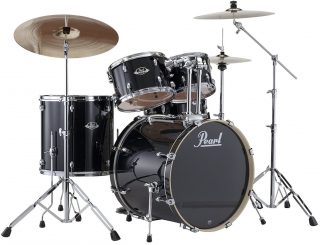
At this point, we’ve covered all the important details drummers need to know, when buying their first kit, or upgrading to a new shell pack.
So the only thing left is to use your new knowledge to start comparing models.
But besides what’s already been mentioned, the one detail left to consider is the price.
Regardless of your budget, the sweet spot price range for beginner drum sets is always the same:
- $600-$1000
Any less than $600 and you’ll likely get something closer to a toy than a musical instrument.
Any higher than $1000, and you’re approaching a budget where you may just be better off NOT buying a complete drum set at all, and instead…purchasing each component individually.
Luckily…once you narrow things down to this price range, you’re basically left with the following list of viable options:
- Pearl Roadshow
- Pearl Export – (Amazon/Thomann)
- PDP Center Stage – (Amazon)
- Mapex Tornado w/Zildjian Planet Z cymbal kit – (Thomann)
- Yamaha Stage Custom – (Thomann)
- Tama Imperialstar – (Amazon/Thomann)
- Ludwig Accent Drive – (Amazon)
- Ludwig Element Evolution w/Zildjian Cymbals – (Amazon)
And if you happen to be looking for a “junior kit” for your child – or just a really small kit, check these out instead:
- PDP New Yorker – (Amazon/Thomann)
- Ludwig Breakbeats QuestLove Signature – (Amazon/Thomann)
- Pearl Roadshow Jr. – (Amazon/Thomann)
- Pearl Compact Traveler – (Amazon/Thomann)
So What Exactly Makes a Great Drum Shell Pack?
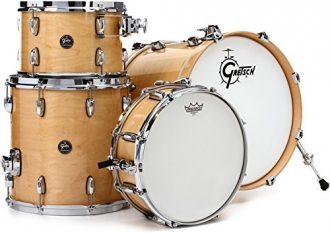
Once you’ve been playing for 6 months to 1 year, and you’re kinda getting the feel for it…
You start wondering to yourself: What could I sound like if I had some better gear?
And while many drummers will save the shell pack for their very last upgrade (since it’s the most expensive)…
I would argue that it makes more sense to save your money for this upgrade first, since a good shell pack will have the greatest impact on your overall sound.
So…what exactly makes a great drum shell, you ask? Let’s find out.
Which Woods Make the Best Drum Shells?
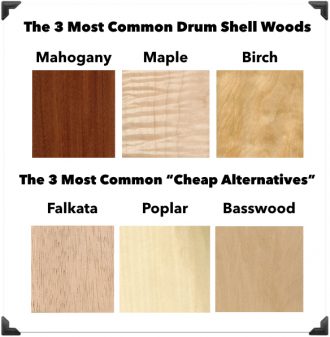
The ideal drum shell wood is determined by 3 factors:
- tone – it has to produce a nice sound (obviously).
- abundance – it can’t be too rare or too expensive.
- workability – it has to be relatively easy to mold into a shell, and stable enough to hold its shape over time.
And the 3 woods best-suited for this job are:
- Maple – which is the most popular, highly versatile, with a well-balanced tone.
- Birch – which is ideal for recording, due to its accentuated highs and lows…and abundant enough to be used on both cheap and expensive kits.
- Mahogany – which is the least common due to its scarcity, and known for its warm vintage tone.
With cheaper drum sets, the top 3 substitutes for the “premium woods” just covered are:
- Falkata
- Poplar
- Basswood
And among rare woods, you can occasionally find high-end custom shell packs made from any of the following:
- Beech
- Cherry
- Walnut
- Oak
- Bubinga
- Ash
You can also find synthetic shells (usually bass and toms) made of :
- acrylic
- fiberglass
- carbon fiber
And metal shells, usually snares, made of:
- steel
- aluminum
- copper
- bronze
How Exactly Are Drum Shells Shaped?
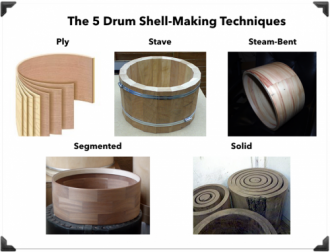
When manufacturing drum shells, the cylindrical shape is created using 1 of 5 methods:
- The Plywood Method – by gluing layers of thin flexible wooden sheets together within a circular mold.
- Pros – cheap to produce, well-suited for mass production, and most popular method by far.
- Cons – less sturdy, glue may negatively impact tone.
- The Stave Method – by gluing wood strips vertically into a shell, much like you would with a barrel.
- Pros – holds shape well because there is no stress on the wood. Most popular with custom drum makers.
- Cons – more costly than plywood shells, ineffective with thinner shells.
- The Segmented Method – by gluing smaller strips of wood in a pattern mimicking floorboard tiles.
- Pros – holds shape better than plywood
- Cons – requires many pieces, and therefore less popular
- The Steam-Bent Method – by softening a single piece of wood with steam, then rolling it into a shell.
- Pros – uses very little glue, and according to most drummers, has a better tone than the previous methods.
- Cons – difficult to maintain roundness, difficult to make too thin or too thick, quite rare to find.
- The Single Piece Method – by carving a single piece of wood directly from a tree trunk. Originally, all drums were made this way.
- Pros – no stress on the shape, no joints or glue, best sound of all.
- Cons – expensive to carve, not practical for thinner shells, not many suitable woods, least common of all methods.
Regarding shell thicknesses, here’s what you can expect:
- Thicker Shells – have a brighter tone with a higher fundamental note
- Thinner Shells – have a warmer tone with a lower fundamental note
Up next…
How Does the Bearing Edge Cut Affect the Tone of the Drum?
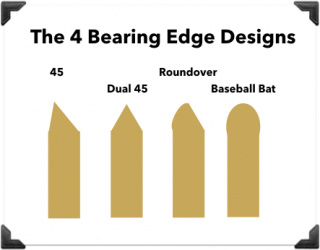
For the final part of drum shell shaping, we have the cut of the bearing edge…where the wood makes contact with the drum head.
The 4 most common bearing edge cuts are:
- 45° – with a 45° cut on the inner edge, and a tiny 1-ply cut in the opposite direction on the outer edge. This offers a good combination of attack and sustain, since the shell makes minimal contact with the head.
- Dual 45° – with symmetrical 45° cuts on each side of the shell, resulting in a contact point closer to the center of the drum. This allows for longer sustain and a greater tuning range.
- Roundover – with the same 45° cut on the inner half, and a more rounded cut on the outer half which adds more contact area between the shell and head. The result is a vintage/jazzy sound, with more stick articulation, less sustain and a warmer tone.
- Baseball Bat – with a rounded edge on both sides to create an extremely warm vintage tone, with minimal sustain, and minimal overtones.
How are Finishes Applied to Drum Shells?
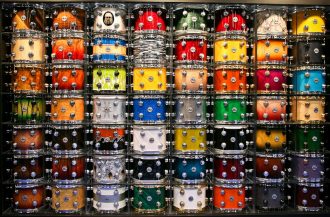
To add the finishing touches on a drum shell, an outer coating is applied using 1 of 3 methods:
- Staining – which can be as simple as rubbing some tung oil on the wood.
- Laquer – which is a bit more complex, and may include layering and buffing.
- Wrapping – which is done by covering the shell in a thin vinyl sheet.
Compared to the first two methods, wrapping offers 3 advantages:
- They’re cheaper and easier to produce
- They allow for the greatest variety of design patterns
- They offer the greatest durability and resistance to scratching
The common concern with wraps however, is that they could potentially have a negative effect on tone.
And while this may be true with wraps on cheaper and/or older drums, which tend to be much thicker, today’s modern technology allows for ultra-thin wraps…which most sources agree, have a negligible effect on sound.
So with newer high-end shell packs, you need not worry.
The 3 Types of Drum Hoops and How They Affect Tone
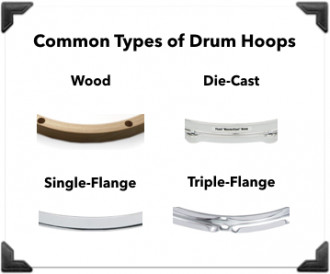
With modern drum sets, there are 3 common hoop designs:
- Wood
- Die-Cast
- Flanged
Compared to flanged hoops, wood and die-cast metal hoops are stronger and heavier, and maintain a firmer grip on the outer edge of the drum head.
This results in a more focused sound, with less sustain, better projection with rimshots/rimclicks, and more tuning stability.
Flanged hoops on the other hand, are much lighter, and make minimal contact with the outer edge of the drum head, resulting in more overtones, and more sustain.
The two common variations of flanged hoops are:
- Single or Double flanged – with a sharp upper edge on the rim that can be harsh on sticks
- Triple flanged – which adds an extra bend over the upper edge (sometimes inward, sometimes outward) to create a rounded playing surface that is easier on your sticks.
Recently, a new hybrid design known as the S-Hoop was invented…which is essentially a triple-flanged hoop with the density and strength of a die-cast, and an extended top flange which offers a better playing surface for your drumsticks.
The Best Drum Set Shell Packs on the Market Today
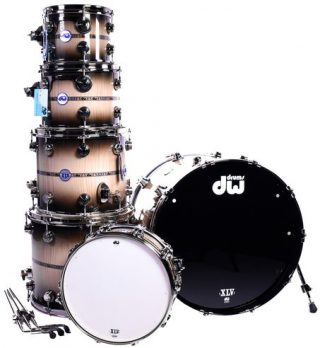
By this point, we’ve pretty much covered every you need to know about drum set shell packs.
So the only thing left to do now, is to use your new knowledge to start comparing models.
But since there are literally 100’s of possible options to choose from…it’s impossible to narrow things down to a short list of recommendations to suit almost anyone.
So what I’ve done instead, is simply create a list of the best-selling and most highly reviewed shell packs currently on the market…and hopefully, one of them will feel right to you.
If not, then I suppose the search continues.
So here are the best options UNDER $1200:
- PDP by DW Concept
- Tama Superstar
- Yamaha Stage Custom – (Amazon/Thomann)
- Gretsch Catalina Club– (Amazon/Thomann)
- Mapex Armory – (Amazon)
- Mapex Mars Series – (Amazon/Thomann)
And here are the best options OVER $1200:
- Tama Starclassic – (Amazon/Thomann)
- PDP Concept Maple – (Amazon/Thomann)
- Gretsch Catalina Maple – (Amazon/Thomann)
- Ludwig Centennial – (Thomann)
- Pearl Masters – (Amazon/Thomann)
- DW Design Series – (Amazon/Thomann)
- Yamaha Live Custom Hybrid Rock – (Thomann)
- Gretsch Renown – (Amazon/Thomann)
Which Drum Set Upgrades Should Come Next?
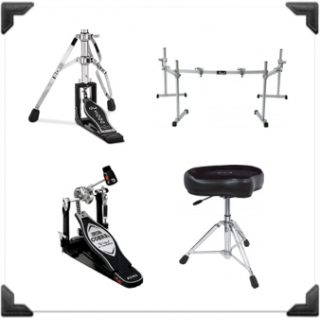
Once you’ve got a good shell pack that you’re happy with, there’s still a bunch more upgrades left to consider.
For example:
- Drum Heads
- Ride/Crash/Hi-Hats
- Snare Drums
- Drum Thrones
- Bass Drum Pedals
- Hi-Hat Stands
- Racks and Stands
So up next, we’ll look at each of these upgrades in more detail, in their approximate order of importance.
Starting first with…
Drum Set Upgrade 1: Drum Heads
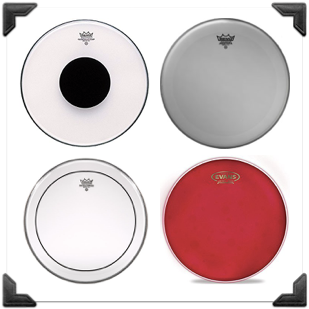
When buying shell packs…one accessory that many drum manufacturers are unclear about is the drum heads.
They don’t always say whether the shell pack includes heads or not…and if they do, they may not say exactly WHICH heads are included.
Typically though, shell packs include generic heads labeled with the brand name of the drum company…which are almost always inferior to what you’d get from buying heads separately.
And since drum heads are responsible for a huge portion of the overall tone, yet are quite cheap compared to the drums themselves…it makes sense to immediately swap out the factory heads with premium heads.
Having said that…there’s still the matter of understanding exactly what makes a great drum head.
Luckily though, I have an entire post for you, dedicated to this one exact subject:
Drum Set Upgrade 2: Ride/Crash/Hi-Hat Cymbals
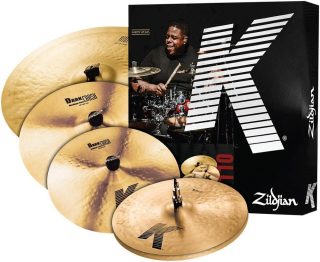
Now that your drums are sounding as good as can be, it’s time to work on the “other half” of your kit: the cymbals.
Because just like with drum heads, the cymbals included in complete package sets aren’t nearly as good as those that you’d purchase individually.
Since this topic can be rather complex and lengthy, I’ve dedicated an entirely separate post to it, which you can see here:
Drum Set Upgrade 3: Snare Drums
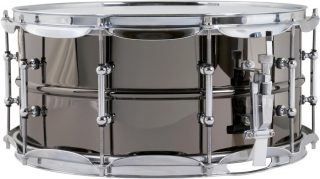
Unlike the kick drum and toms, which usually require some degree of tonal uniformity in order to sound “right”…
Snare drums tend to have a sound entirely their own, almost completely independent from the rest of the kit.
Which is why pro drummers often keep multiple snares on hand for a single kit (especially in the studio). Some even travel with only their snares, which they then use with whatever house drum set it available.
And so, if you’d like to dive deeper into the subject of snare drums, here’s another post for you:
Drum Set Upgrade 4: Premium Drum Thrones
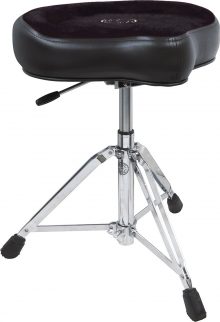
When you first start playing drums, it never occurs to you how important your chair might actually be.
But it doesn’t take long at all to figure it out.
Not only does a good drum throne makes playing 10x more comfortable, it also increases the precision and accuracy of your playing, since it’s the foundation from which you base all your movements, particularly your legs.
And when all 4 limbs are doing their own thing at once…it’s not hard to imagine how a wobbly foundation can result in a bit of unsteadiness.
And so…to learn more about drum thrones in general and get a few recommendations…check out this post:
Drum Set Upgrade 5: Kick Drum Pedals
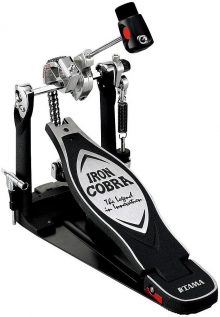
Kick drums are unique in the sense that they are one of the few instruments played with your feet, rather than hands.
And it requires not only a good foot, but a good pedal as well.
On one hand, playing with a cheap wobbly bass drum pedal is the equivalent of playing with an old, arthritic, diabetic foot.
And since premium pedals are a relatively cheap investment compared to the rest of your kit…it only makes sense to limit yourself to the very best.
To see exactly which pedals fall into that category, check out the links below:
Single Pedals:
- Tama Iron Cobra 200 – (Amazon/B&H/Thomann)
- Tama Iron Cobra 900 – (Amazon/B&H/Thomann)
- Tama Speed Cobra – (Amazon/Thomann)
- DWCP2000 – (Amazon/Thomann)
- DW5000 – (Amazon/Thomann)
- DW9000 – (Amazon/Thomann)
- Pearl Eliminator Redline – (Amazon/Thomann)
- Pearl Demon XR – (Amazon/Thomann)
Double Pedals:
- Tama Iron Cobra 600 – (Amazon/B&H/Thomann)
- Tama Iron Cobra 900 – (Amazon/B&H/Thomann)
- Tama Speed Cobra 310 – (Amazon/B&H/Thomann)
- Tama Speed Cobra 910 – (Amazon/B&H/Thomann)
- DW5000 – (Amazon/Thomann)
- DW9000 – (Amazon/Thomann)
- Pearl Demon Drive – (Amazon/Thomann)
- Pearl Eliminator – (Amazon/Thomann)
Drum Set Upgrade 6: Hi-Hat Stands
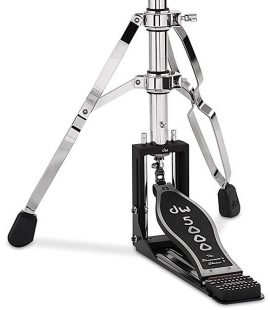
Just like with bass drum pedals, hi-hat stands also function as an extension of your foot.
The smoother the motion of its parts…the more potential you have to play faster, more intricate rhythms.
But just like all stock drum hardware, stock hi-hat stands are usually mediocre at best.
And there are way better options out there, if you’re willing to spend a little extra.
In the list below, I’ve included the standard 2-leg and 3-leg models, as well as more unique models.
What drummers typically find is that the 3-leg models are sturdier and ideal for heavy-footed playing.
The 2-leg models, while still quite sturdy as well, offer the primary advantage of occupying less floor space, which may be necessary in cramped venues, and is especially necessary if you play double bass pedals.
Some interesting specialty designs include:
- Remote Stands– which are attached to the hi-hats with a cable, rather than stand.
- No-Leg Stands – which eliminate all legs for maximum floor space.
- Quick-Release Stands – which make it much easier to release and tighten the clutch of the top hi-hat
So here are the links:
2-Leg Models:
- DW PDP 800 – (Amazon/Thomann)
- Tama Speed Cobra 315 – (Amazon/Thomann)
- Griffin Stand – (Amazon)
- DW3500 – (Amazon/Thomann)
- DW5500 – (Amazon/Thomann)
- DW9500 – (Amazon/Thomann)
- DW MDD – (Thomann)
3-Leg Models:
- Mapex Armory Black – (Amazon/Thomann)
- Ludwig Atlas Standard – (Amazon)
- Yamaha 700 Series – (Amazon/Thomann)
- DW3500 – (Amazon/Thomann)
- DW5500 – (Amazon/Thomann)
- DW7500 – (Amazon/Thomann)
- DW9500 – (Amazon/Thomann)
- DW MDD – (Thomann)
Special Hi-Hat Stands
- Gibraltar No Leg Stand – (Amazon/Thomann)
- DW 6500 Ultra Light – (Amazon/Thomann)
- Tama MXA73N Closed Hi-Hat Attachm. – (Amazon/Thomann)
- Remote Stands
Drum Set Upgrade 7: Stands and Racks
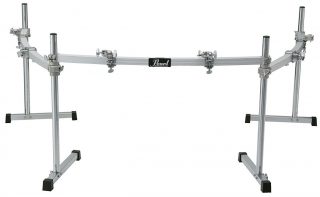
For our final upgrade of this post, we have stands and racks. Which includes:
- Cymbal Stands
- Snare Stands
- Drum Racks
The reason I chose to mention them last, is that it typically takes many weeks or months to really get a sense of how they perform.
If you aren’t noticing any problems with your current hardware setup, there’s really no good reason to upgrade.
However if you are, it can be difficult to know exactly what to upgrade to. So in this case, the best way to ensure you’re making a wise purchase is to trust the word of other drummers who have owned and used the gear for extended periods.
And after much research, these are the very best options I’ve found:
Cymbal Stands:
- Ludwig Atlas Boom Stand – (Amazon/Thomann)
- Pearl BC930 – (Amazon/Thomann)
- Pearl Boom Arm with Attachment Clamp – (Amazon/Thomann)
- Pearl Curved Boom – (Amazon/Thomann)
- DW300 Series Boom Stand – (Amazon/Thomann)
- DW Double Cymbal Boom Stand – (Amazon/Thomann)
Snare Stands:
- DW CP5300 – (Amazon/Thomann)
- Ludwig Atlas Pro– (Amazon/Thomann)
- Pearl S930D – (Amazon/Thomann)
- Pearl S1030D Low Snare Drum Stand – (Amazon/Thomann)
- DW 9300AL w/pneumatic system – (Thomann)
Racks:
- Gibraltar Road Series – (Amazon/Thomann)
- DW Super – (Amazon/Thomann)
- Gibraltar Curved Double Bass – (Amazon/Thomann)
- Gibraltar GSVMS Stealth (versatile/expandable to double bass rack) – (Amazon/Thomann)
- Gibraltar U-shaped rack – (Amazon/Thomann)
- Gibraltar Stealth Side Rack – (Amazon/Thomann)
By the way, if you found this post useful, I highly recommend joining our free Home Recording Secrets email newsletter where you’ll discover….
- How to Get Your First Studio Up and Running in a Single Weekend
- How to Avoid Wasting Thousands of Dollars on Unnecessary Pointless Purchases
- How to Get a “Million Dollar” Pro Studio Sound in a “Thousand Dollar” Home Studio
- PLUS… All Sorts of Other Amazing Insider Secrets Revealed
And it’s totally FREE! Click here and Enter Your Email to Sign Up.
More Drum/Percussion Posts in this Series:
Drum Sets | Electronic Drums | Snares | Drumheads | Cymbals | Djembe | Bongos | Cajon | Conga | Cowbell | Tambourines | Vibraphones | Xylophones | Marimbas | Glockenspiels | Metronomes | Drum Thrones | Drumsticks | Ride Cymbals